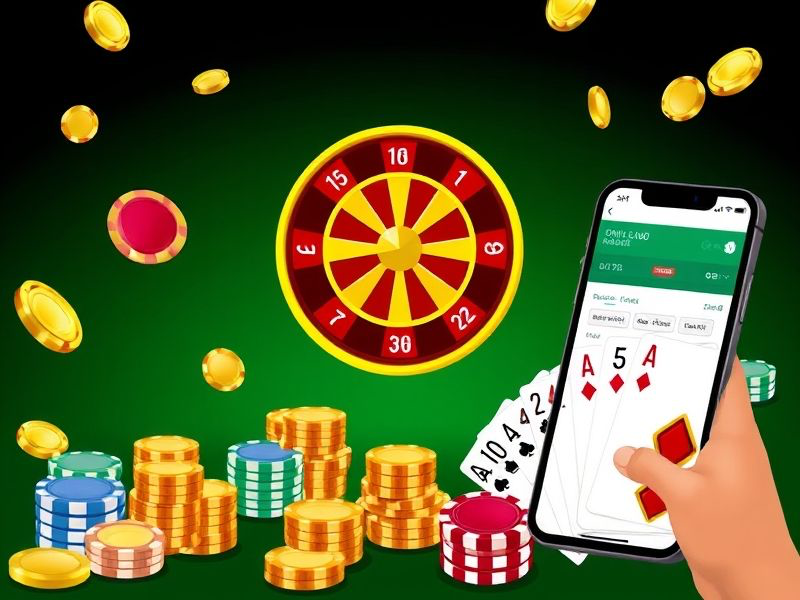
casino near me - Payment & Withdrawal Help
In this fast-paced era, each of us has our own little world. In this personal realm, perhaps you occasionally yearn to break free and experience a thrilling rush. Today, let me take you to a place filled with excitement and surprises—a casino that's just around the corner. Here, you can immerse yourself in a variety of games and savor that heart-racing sensation. However, to truly enjoy yourself and ensure peace of mind, it’s essential to familiarize yourself with some deposit and withdrawal methods. Today, I’ll share some tips on how to use local payment methods like UPI, PhonePe, and Paytm to make your experience seamless.
Why Choose Local Payment Methods?
First, let’s discuss why choosing local payment methods is beneficial. In modern society, as technology advances, payment methods have become increasingly diverse. However, for most people, using local payment methods not only offers greater convenience but also enhanced security. For instance, UPI (Unified Payments Interface) is an instant payment system developed by the National Payments Corporation of India (NPCI) that facilitates quick transfers between various bank accounts. PhonePe and Paytm, on the other hand, are among the most popular mobile payment apps in India, known for their robust features and user-friendly interfaces.
The advantages of local payment methods include lower fees—sometimes even free transactions—and immediate fund transfers, significantly reducing waiting times. Most importantly, these methods boast high levels of security, effectively minimizing the risk of fund misuse. Therefore, whether you’re a novice or a seasoned player, opting for local payment methods is a wise choice.
Exploring UPI Payments
Next, let’s delve into UPI payments. UPI is an instant payment method conducted via smartphones, enabling seamless transfers between various bank accounts. To use UPI, you first need to register for a UPI ID through your bank or payment app. This ID acts as a virtual address for your bank account, facilitating the sending and receiving of funds. Once registered, you can transfer money through various channels such as SMS, calls, websites, or mobile apps.
Using UPI is straightforward. Start by downloading and installing a UPI-enabled app like Google Pay, PhonePe, or Paytm on your smartphone. Then, register an account and link it to your bank account. Once set up, you can initiate transfers by simply entering the recipient’s UPI ID and confirming the amount. The entire process takes just seconds.
Understanding PhonePe Payments

Now, let’s talk about PhonePe payments. PhonePe is one of India’s leading mobile payment apps, offering a range of functionalities beyond simple transfers. To use PhonePe, download and install the app on your phone, register an account, and link it to your bank account. Once everything is set up, you’re ready to transfer funds.
To transfer money, enter the recipient’s mobile number or PhonePe ID. PhonePe will automatically convert the mobile number into the recipient’s ID. Confirm the amount and tap “Send” to complete the transaction. The process is swift, taking mere seconds. Additionally, PhonePe supports various payment methods such as QR code and NFC payments, adding to its convenience.
Getting to Know Paytm Payments
Lastly, let’s explore Paytm payments. Paytm is another widely used mobile payment app in India, known for its versatility and ease of use. To begin, download and install the Paytm app on your phone, register an account, and link it to your bank account. Once set up, you can start transferring funds.
Transferring money requires entering the recipient’s mobile number or Paytm ID. Paytm will automatically convert the mobile number into the recipient’s ID. Confirm the amount and tap “Send” to finalize the transaction. Like the others, this process is strikingly swift. Paytm also supports various payment methods, including QR code and NFC payments, enhancing its functionality.
How to Deposit
With these payment methods in mind, let’s discuss how to deposit funds. First, ensure that your local payment app is installed and registered. Open the app and locate the deposit or transfer function. To deposit, enter your UPI ID, PhonePe ID, or Paytm ID along with the amount. Verify the details and tap “Send” to complete the deposit. The process is straightforward—just a few seconds.
How to Withdraw
Next, let’s cover withdrawals. The process is similar to depositing. Ensure your local payment app is installed and registered. Open the app and find the withdraw or transfer function. To withdraw, enter the recipient’s mobile number or bank account information along with the amount. Verify the details and tap “Send” to complete the withdrawal. Again, it’s a quick and simple process.
KYC Verification
Before making deposits or withdrawals, you’ll need to verify your identity through KYC (Know Your Customer) verification. KYC ensures the security of your account and helps prevent illegal activities. During KYC verification, you’ll provide personal details such as your ID number, address, and photo. This information is submitted through your local payment app to the relevant authorities for review. Once approved, you can proceed with deposits and withdrawals.
Speeding Up Withdrawals
Finally, let’s discuss how to expedite withdrawals. First, ensure your KYC verification is complete. Secondly, choose reputable local payment apps, as they often facilitate quicker withdrawals. Additionally, consider using online payment methods such as bank cards or credit cards for faster withdrawals. Lastly, ensure your account has sufficient funds to avoid any issues during the withdrawal process.
Conclusion
In this article, we’ve thoroughly explored utilizing local payment methods like UPI, PhonePe, and Paytm for deposits and withdrawals. These methods are not only convenient and swift but also secure and reliable. We’ve also covered KYC verification and tips to accelerate withdrawals. Hopefully, this information assists you in enjoying your experience while ensuring the safety of your funds. If you have any questions, please feel free to leave a comment below, and I’ll do my best to answer them.

